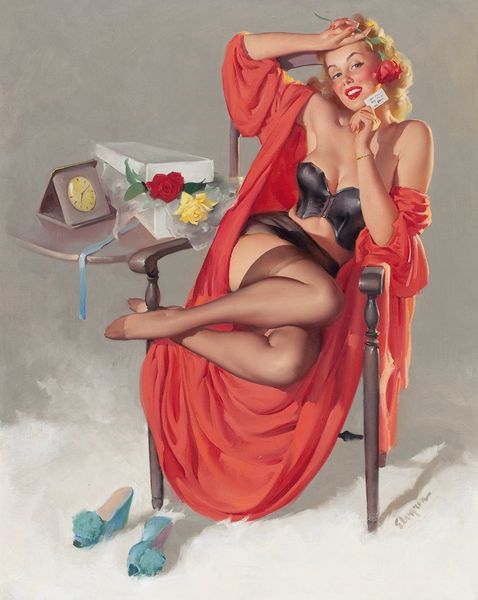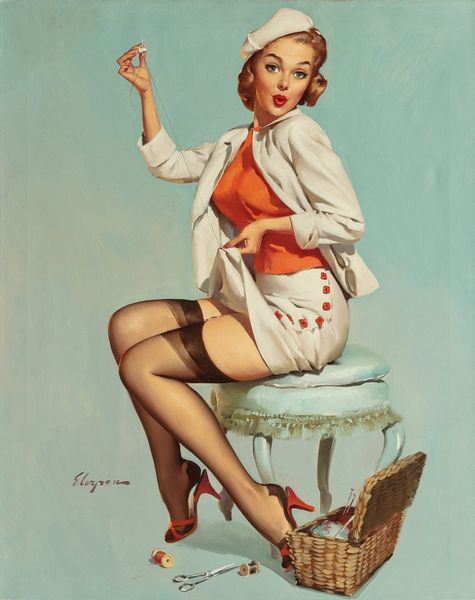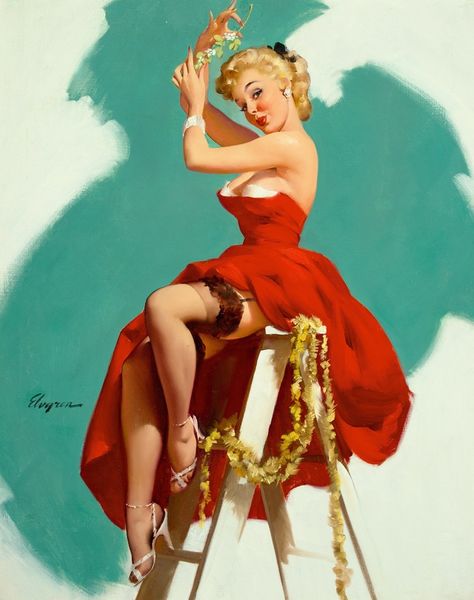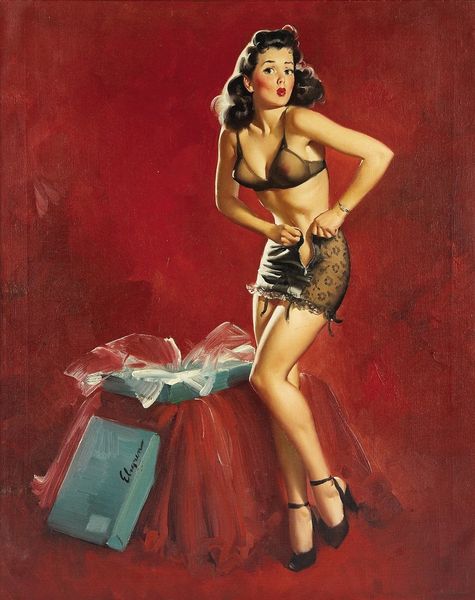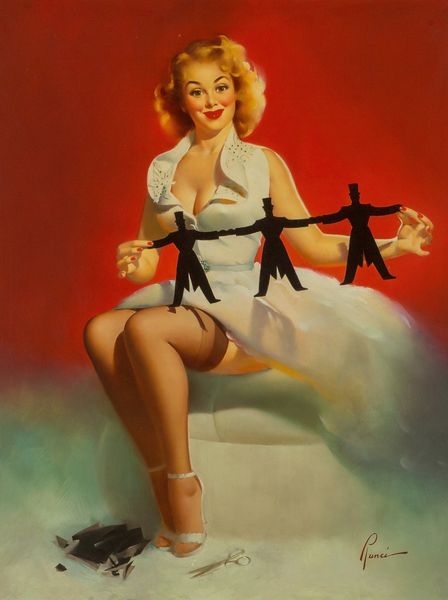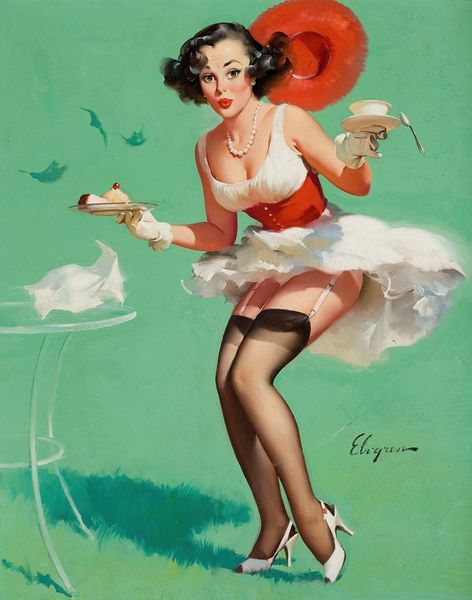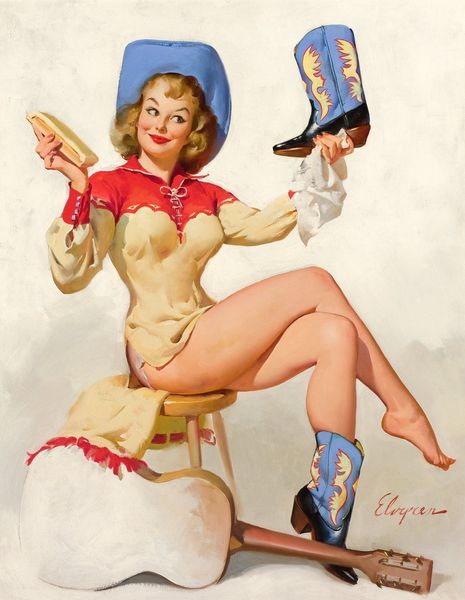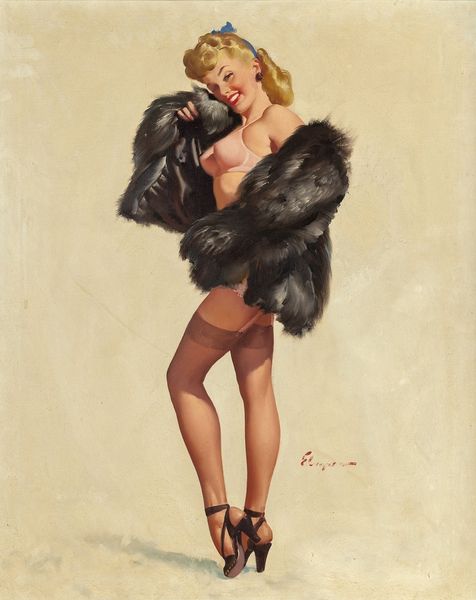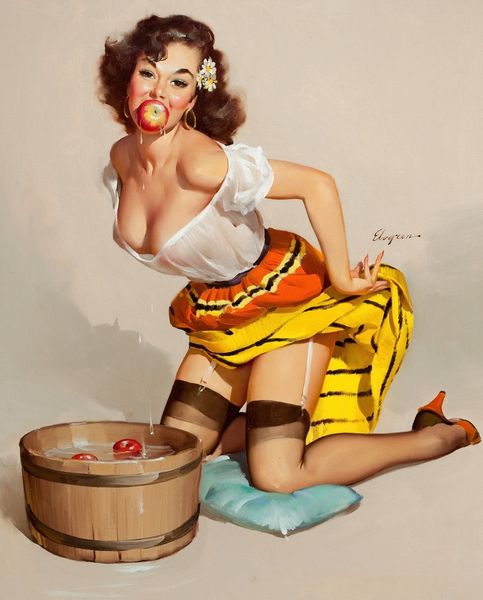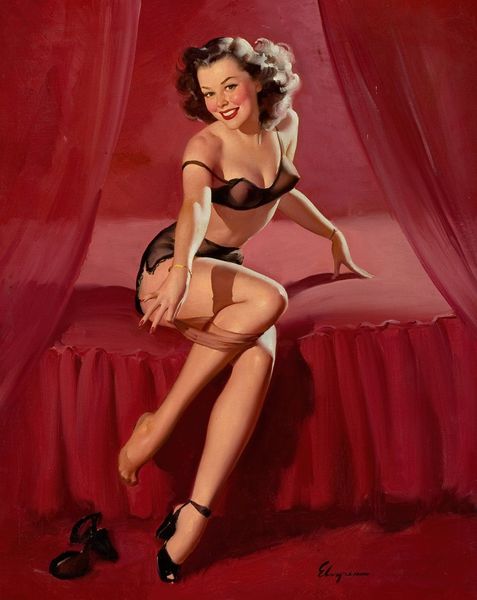
painting, oil-paint
#
portrait
#
painting
#
oil-paint
#
figuration
#
portrait reference
#
portrait head and shoulder
#
animal portrait
#
animal drawing portrait
#
portrait drawing
#
facial study
#
genre-painting
#
facial portrait
#
portrait art
#
modernism
#
fine art portrait
#
realism
#
digital portrait
Copyright: Modern Artists: Artvee
Editor: Here we have Gil Elvgren's "Fire Belle" from 1956, an oil painting. It's definitely playful, but also seems to play into certain... well, certain tropes. What’s your take when you look at this painting? Curator: The painting is clearly meant to sell something, perhaps an idea of idealized femininity, or maybe the glossy fantasies of post-war America. Consider the materiality: oil paint, traditionally associated with high art, used here for what some might call low-brow or commercial purposes. Look at how Elvgren uses the very substance of oil paint to create a surface sheen mimicking magazine covers and seductive appeal. Editor: So, you're saying it's not just *what* is being depicted, but *how* it's being depicted that's important? The shine of the paint almost becomes part of the message? Curator: Precisely! The means of production—oil paint, skilled labor—are all deployed to create a consumable image. Even her pose, the clinging fabric, the exaggerated curve—all of these are meticulously crafted to stimulate desire, becoming part of the consumer culture machinery. The context of the art work cannot be ignored. Ask yourself - What are the underlying dynamics in American commodity fetishism that this painting unveils? Editor: That makes me think about who the intended consumer would have been. Would this have been aimed primarily at men, shaping their expectations? Curator: It’s plausible. This also raises the question of what social roles and positions of work are depicted – she isn’t battling any blazes! Editor: Wow, I didn’t think about it that way. I always just saw it as a cheesecake pin-up. Curator: And that is exactly the problem. Editor: It’s much more than that after discussing the socio-economic impact and artistic style in shaping and selling these types of fantasy ideals. Curator: Exactly! And we have to continue questioning such representations.
Comments
No comments
Be the first to comment and join the conversation on the ultimate creative platform.
